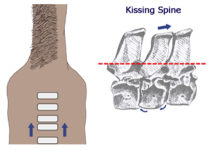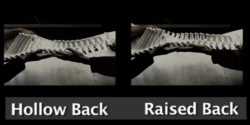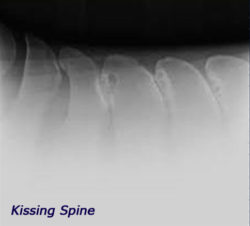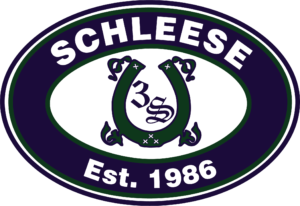Saddle Fit and Kissing Spines
 There are still differing opinions as to whether kissing spines is a disease with predilection already present at birth, or whether it is caused by ‘something’ (poor saddle fit, poor riding, etc.) during the course of the horse’s life. Dr. Carol Vischer, DVM in NY has done extensive research and come to the conclusion that kissing spine is a disease that some horses are just prone to, but whatever you believe – the fact is that it can definitely be exacerbated by poor riding and bad saddle fit.
There are still differing opinions as to whether kissing spines is a disease with predilection already present at birth, or whether it is caused by ‘something’ (poor saddle fit, poor riding, etc.) during the course of the horse’s life. Dr. Carol Vischer, DVM in NY has done extensive research and come to the conclusion that kissing spine is a disease that some horses are just prone to, but whatever you believe – the fact is that it can definitely be exacerbated by poor riding and bad saddle fit.
To understand how saddle fit plays a role in kissing spines, you first have to examine the possible underlying factors. Along with ‘trainable’ or conditioned reflexes, both horses and humans have parasympathetic, non-consciously controllable reflex points, where muscles react to a stimulus of specific nerves without the horse or human being able to stop them.

 A saddle which is too long, or pinches at the gullet, or is too tight over the shoulder(s) (where the tree width or angle is incorrect) and as a result sits on one of the horse’s specific reflex points can cause many problems. The equine spinal column has nerve ends which protrude between each of the vertebrae. About five of these nerve ends are actual reflex points. Using pressure between the 18th thoracic vertebra and ending at the withers to approximate the feel of a saddle (under even a light rider) will cause the horse to drop his back. If the horse were to assume this position the whole time under saddle, the formation of the condition known as ‘kissing spine’ would result – presuming it is not already present. Pressure on these nerve ends from a gullet channel which is too narrow, a saddle which is too long, or a saddle which twists during movement because of natural asymmetry (and a gullet plate which has not been fitted to accommodate the larger shoulder), will cause the horse to reflexively lower his back to escape the pressure and/or resulting pain.
A saddle which is too long, or pinches at the gullet, or is too tight over the shoulder(s) (where the tree width or angle is incorrect) and as a result sits on one of the horse’s specific reflex points can cause many problems. The equine spinal column has nerve ends which protrude between each of the vertebrae. About five of these nerve ends are actual reflex points. Using pressure between the 18th thoracic vertebra and ending at the withers to approximate the feel of a saddle (under even a light rider) will cause the horse to drop his back. If the horse were to assume this position the whole time under saddle, the formation of the condition known as ‘kissing spine’ would result – presuming it is not already present. Pressure on these nerve ends from a gullet channel which is too narrow, a saddle which is too long, or a saddle which twists during movement because of natural asymmetry (and a gullet plate which has not been fitted to accommodate the larger shoulder), will cause the horse to reflexively lower his back to escape the pressure and/or resulting pain.
The propensity of many incorrectly trained riders to neglect proper gymnastics of the horse at the lower levels to get him to ‘bring his back under’ properly has resulted in what is known as ‘leg movers’ rather than ‘back movers’ – which looks stunning to the general public but I would warrant a guess that many of these horses are also suffering from kissing spine. If not yet present, it will develop from this type of riding where the back remains hollow rather than supple, causing the vertebrae to lean into each other.
